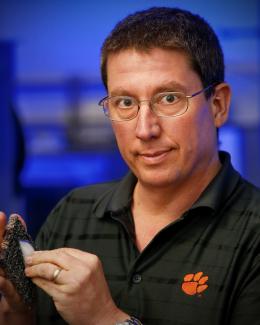Abstract
An inorganic membrane water recovery concept is evaluated as a method to recovering water from the exhaust of an internal combustion engine. Integrating the system on-board a vehicle would create a self-sustaining water supply that would make engine water injection technologies “consumer transparent”. In laboratory experiments, water recovery from humidified air was measured to evaluate how different operating parameters affect the membrane system’s efficiency. The observed impact of transmembrane pressure and gas flow rate suggest that gas residence time is more important than water flux through the membrane. Heat transfer modeling suggests that increasing membrane length can be used to improve efficiency and allow greater flow per membrane, an important parameter for practical applications where space is limited. The membrane water recovery concept was also experimentally validated by extracting water from diesel exhaust coming from a stationary generator. The insight afforded by these studies provides a basis for developing improved membrane designs that balance both efficiency and cost.





